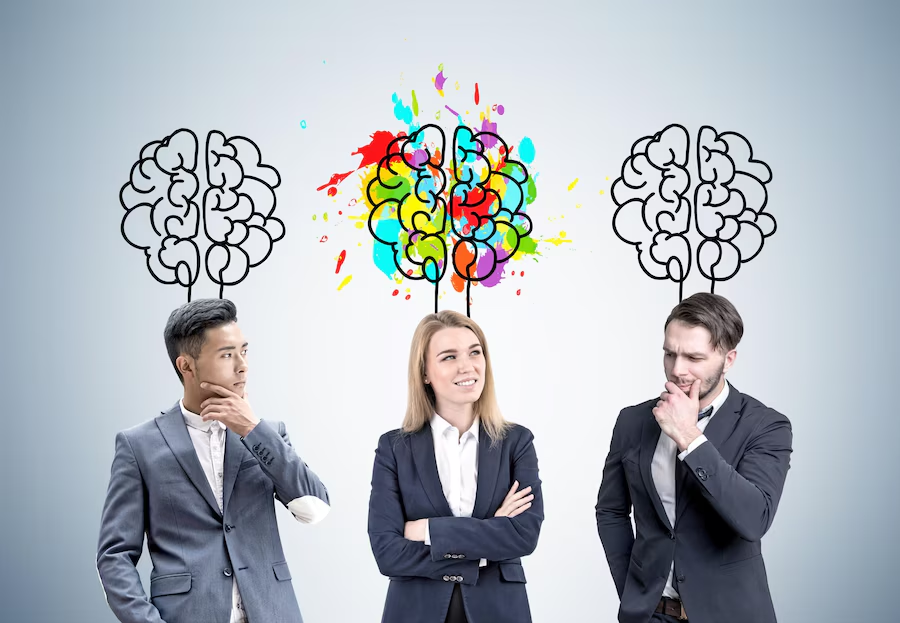The “Think Feel Do” model is a psychological framework that helps explain human behavior by dissecting the cognitive and emotional processes leading to actions. This article explores the components of this model, its applications in various contexts, and its significance in understanding human decision-making.
Components of the Think Feel Do Model
- Thinking (Cognition):
- Rational Thought: The cognitive aspect involves reasoning, analyzing information, and making logical decisions based on facts and evidence.
- Beliefs and Attitudes: Individuals’ beliefs, values, and perceptions shape their thoughts and influence how they interpret situations.
- Feeling (Emotion):
- Emotional Responses: Emotions play a crucial role in decision-making, influencing attitudes and behaviors.
- Motivation: Emotional responses drive motivation, impacting the intensity and direction of actions.
- Doing (Behavior):
- Action and Behavior: The culmination of thoughts and feelings results in observable actions or behaviors.
- Intentions: Actions are often preceded by intentions, which are influenced by both cognitive processes and emotional states.
Applications of the Think Feel Do Model
- Marketing and Advertising: Understanding consumer behavior involves tapping into both rational decision-making processes (thinking) and emotional responses (feeling) to influence purchasing decisions (doing).
- Psychology and Therapy: Therapists utilize this model to help clients identify and modify negative thought patterns (thinking), manage emotions effectively (feeling), and change behaviors (doing) to achieve therapeutic goals.
- Education and Learning: Educators can enhance learning by addressing cognitive processes (thinking) and emotional engagement (feeling) to improve student motivation and academic performance (doing).
Significance in Understanding Human Behavior
- Holistic Approach: The Think Feel Do model offers a comprehensive framework that acknowledges the interconnectedness of cognitive processes and emotional responses in shaping behavior.
- Predictive Power: By analyzing individuals’ thoughts, emotions, and actions, researchers and practitioners can predict and influence behavior more effectively.
- Behavioral Change: Interventions based on this model can facilitate positive behavior change by targeting cognitive restructuring and emotional regulation.
Critiques and Limitations
- Simplification: Critics argue that the model oversimplifies the complexity of human behavior by categorizing thoughts, emotions, and actions into distinct compartments.
- Individual Variability: Individuals vary in how they process information, regulate emotions, and translate thoughts into actions, challenging the universality of the model’s application.
Conclusion
The Think Feel Do model provides valuable insights into human behavior by emphasizing the interplay between cognitive processes, emotional responses, and observable actions. Whether applied in marketing, psychology, education, or everyday decision-making, understanding how thoughts and feelings influence behavior enhances our ability to predict, explain, and influence human actions.
FAQs
- How does the Think Feel Do model apply to everyday decision-making?
- Everyday decisions often involve weighing rational thoughts (think), emotional responses (feel), and subsequent actions (do) based on these considerations.
- Can emotions override rational thinking in the Think Feel Do model?
- Yes, strong emotional responses can influence decision-making by prioritizing feelings over rational thought processes.
- Is the Think Feel Do model used in therapy?
- Yes, therapists use this model to help clients understand the interplay between thoughts, emotions, and behaviors, facilitating positive change.
- Does the Think Feel Do model suggest that behavior is always predictable?
- While the model provides insights into behavioral tendencies, individual differences and situational factors may impact behavior unpredictably.
- How can educators apply the Think Feel Do model in the classroom?
- Educators can enhance student engagement and learning outcomes by addressing cognitive processes (thinking), fostering emotional connections (feeling), and promoting active participation (doing) in educational activities.







